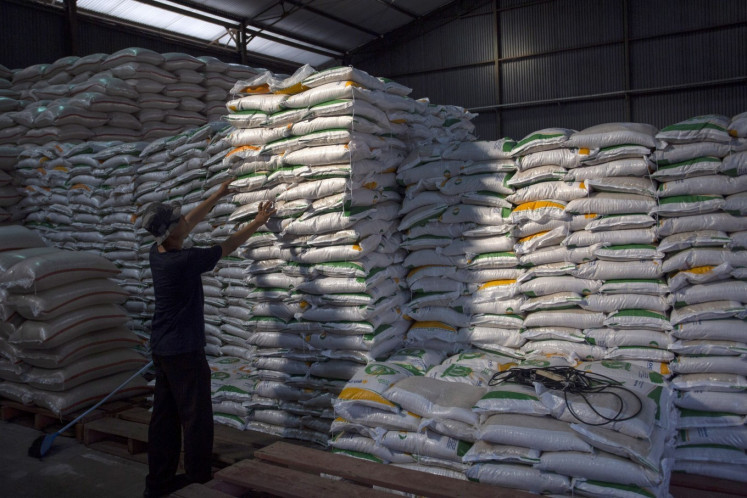Popular Reads
Top Results
Can't find what you're looking for?
View all search resultsPopular Reads
Top Results
Can't find what you're looking for?
View all search resultsSurawana temple still worth seeing
The giant squatting creatures at the foot of Surawana temple in Kediri, East Java, that appear to be holding up the structure with their bare hands is perhaps a testimony to the architect's sense of humor
Change text size
Gift Premium Articles
to Anyone
The giant squatting creatures at the foot of Surawana temple in Kediri, East Java, that appear to be holding up the structure with their bare hands is perhaps a testimony to the architect's sense of humor.
Surawana temple, as it stands today in Kediri, East Java. (JP/Retno K. Djojo)
Despite the severe damage it has sustained over the centuries, the temple, which is found in Pare town, still exhibits exquisitely fine workmanship.
The four corners of the structure, also known as Bloral temple, are adorned with these giant creatures, which look as if they are using all their might to hold up the tons of stone above them.
These crafted giants beg the question: What methods were used in the construction of such a temple made from heavy stone blocks at a time when mortar had yet to be invented?
Archeologists studying old temples believe that ancient architects relied on dove-tail shaped ends, corner stones and pins to hold the weight of such heavy structures. Reliefs adorning temple walls, they say, were incised only after the entire structure was complete.
Creatures carved in stone, which are located at the four corners of the temple’s foundation, appear to hold up the heavy structure with their bare hands. (JP/Retno K. Djojo)
The walls of Surawana temple are richly decorated with beautiful relief panels. One panel sequence depicts the famed Arjunawiwaha and Ramayana Hindu epics.
The Ramayana sequence focuses on the heroic and chivalrous acts of Hanoman, the white monkey general, in upholding virtue over vice.
One relief shows Hanoman jumping over tree tops to enter the enemy's fortress. This episode in the Ramayana is known as Hanoman Duta, or Hanoman the Envoy, in which he was sent by his master Rama to present a ring to Shinta as a token of his faithfulness.
Hanoman succeeded in penetrating Rahwana's fortress, where Shinta was being held prisoner. He succeeded in accomplishing his task, but was caught when trying to sneak out of the enemy's compound. The enemy attempted to burn him alive by wrapping his tail in an oil-soaked cloth.
Hanoman fought with all his might and rolled himself across the rooftop of the compound, thereby setting off the big fire that destroyed Rahwana's fortress.
The panels of the temple also relate the attack by the army of monkeys to subdue Kumbakarna, the brother of Rahwana.
Kumbakarna, known for his patriotism, revolted when he saw that his country, Alengka, was under threat. But before he could save Alengka, he was attacked and killed. For his valor, though, he was venerated.
A sequence of smaller reliefs on the temple's walls depict animals, including birds, tigers and snakes, all still in a good condition.
These reliefs are part of a rich folklore heritage that carry moral and ethical messages.
Surawana temple was built in the year 1400, after the demise of Majapahit ruler Bhre Wengker. A memorial temple, it was intended to function as a place of prayer. Worshippers ascended a small stairway on the western side and gathered in on open platform to conduct prayers.
Historical records reveal that Surawana temple was previously located in a densely forested area and was surrounded by mighty teak trees. It is currently situated in a fenced-off compound, amid a densely populated area.
Restoration work on the temple was carried out over a 6-month period in 1997, but was halted due to lack of funding.











